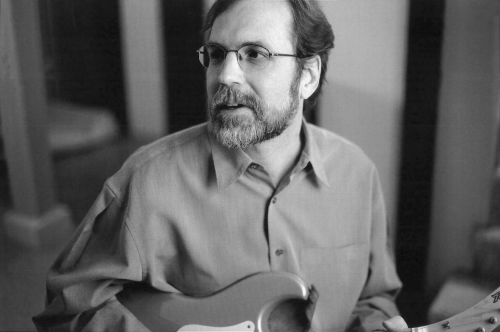Jan 30, 2014
Beatlemania: Q&A with John Kimsey
Beatlemania: Q&A with John Kimsey
This year marks the 50th anniversary of the first performance by the Beatles in the United States. Musician and Beatles scholar John Kimsey teaches “The Beatles and the Creative Process” and is an associate professor in DePaul University’s School for New Learning. He’s an expert in popular music and will be presenting in February at the conference “It Was Fifty Years Ago Today: An International Beatles Celebration” at Penn State Altoona. In this Q&A, Kimsey talks about the how the Beatles changed American music and, in turn, changed everything.
Q: What was the wider cultural impact that the Beatles had when they performed on the Ed Sullivan Show for the first time? What were a couple of the ripple effects in the U.S.?
A: Feb. 9, 1964, has been described as "the night when no hubcaps were stolen anywhere in America." The TV audience for that Sullivan Show performance is estimated to have been 73 million. Legions of kids and young people were inspired to pick up electric guitars and drums and form their own bands. Some were inspired to try their hands at writing their own songs — an activity, by the way, that the Beatles and Bob Dylan established as key to rock musicianship in the mid-1960s. (In the '50s rock era, no one cared much whether the performer was also the author of his/her songs. Elvis and Fats Domino were not songwriters and nobody was the least bothered by that.) The rock revolution of the sixties can be seen as starting here.
Then there was the phenomenon of Beatlemania. This screaming, ecstatic fan response — mostly generated by young women — was viewed by many adults at the time as either a kooky teenage fad or a symptom of mental disturbance. Of course there had been pop idols and ecstatic fans prior to the Beatles, but the sheer number of fans and the volume of their screams reached a new high here, partly because of the size of the baby boomer age cohort.
The feminist writer Barbara Ehrenreich and some other social theorists have argued that Beatlemania was a proto-feminist expression of girl power. Large numbers of young women and girls seized the opportunity offered by the mania to act out in public, uninhibitedly expressing raw, "un-ladylike" emotions en masse, something that cut against gender norms of the time and which struck fear into the hearts of authority figures.
Q: You teach a class in DePaul’s School for New Learning about the Beatles and the creative process. Why do you believe the Beatles are still so relevant to students today?
A: Let me offer a quote from Derek Taylor, who started out as the Beatles' press officer and became their close colleague and confidante. Taylor once told journalist Mark Hertsgaard, "The Beatles are an abstraction, like Christmas. They represented hope, optimism, wit, lack of pretension, [the idea] that anyone can do it, provided they have the will to do it. They just seemed unstoppable."
I would add that they're outstanding in three distinct areas, something that's extremely rare for pop musicians: They were superb songwriters; they have a striking history of live performance (and audience response); and they were leaders in pioneering a new art form, sometimes called phonography, which is using the recording studio itself as musical instrument, as a creative tool.
Then there is their connection to culture. They started out in what many viewed as one of the lowliest fields of low-status popular culture — rock 'n' roll — and ended up being celebrated by the young (and many of the old) as artistic seers. This helped to disrupt the old, hierarchical opposition between so-called high culture and so-called popular culture. Today we live in that new cultural dispensation.
Q: How have the Beatles influenced your own music? What’s your favorite Beatles song?
A: I'm a guitarist, singer and songwriter who was born in the mid-1950s. People who fit that profile are typically saturated in Beatles influence. For having your mind blown, nothing to this day beats "Tomorrow Never Knows," the last track on the 1966 LP “Revolver.” For driving, old school rock 'n' roll (and quintessentially Beatlesque vocals), "I Saw Her Standing There" is a standout. For its angular melodicism, its use of a modal drone-sound, its strikingly syncopated drum part and its majestic chiming guitars, I love "Ticket to Ride." And when it comes to group singalongs, whether in a living room or stadium, I've got two words for you: "Hey Jude."
Q: Is there anything that we didn’t ask that you’d like to add?
A: There's a thread of cheeky, often anti-establishment humor that runs through the Beatles' work that's noteworthy. There's a scene in “A Hard Day's Night” where a posh, slightly older woman asks Ringo a cliché question about British beat music. She asks, "Are you a Mod or a Rocker?" Ringo replies, "Um, no — I'm a mocker."
###

Beatles scholar John Kimsey is an associate professor in DePaul University's School for New Learning. (Photo by Dan Shea)
